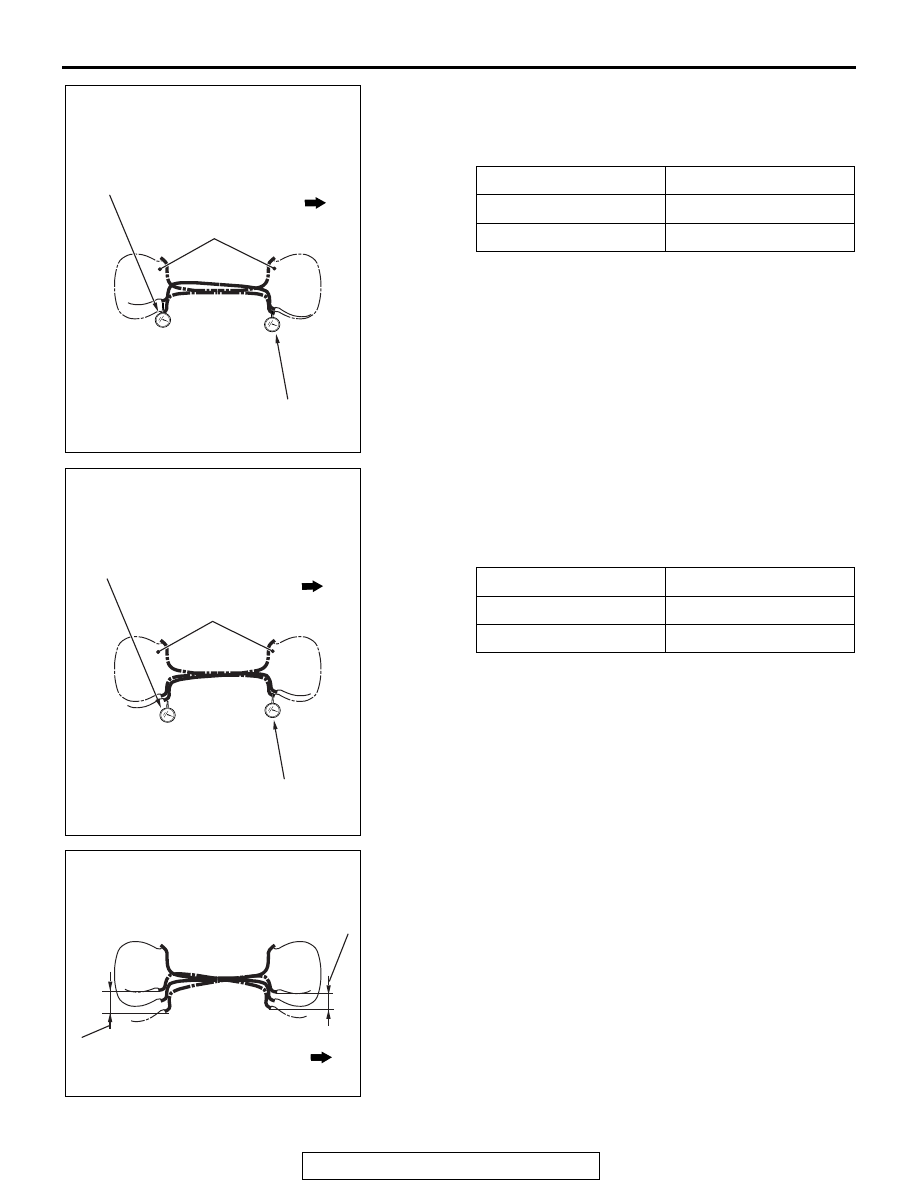Content .. 1562 1563 1564 1565 ..
Mitsubishi Outlander GS45X. Manual - part 1564

ON-VEHICLE SERVICE
TSB Revision
POWER STEERING
37-19
(1) While pushing the "Position B" with the specified load by
wheel size, read the values on the dial gauges at the "
Position a" and "Position b". The values of the dial
gauges at this time shall respectively be "aB" and "bB".
(2) Remove the load in the "Position B". Then while pushing
the "Position A" with the specified load by wheel size,
read the values on the dial gauge in the "Position a" and
"Position b". The values on the dial gauges at this time
shall respectively be "aA" and "bA".
(3) Make calculation taking the value differences of the dial
gauge positions a and b which were read while pushing
the "Position A" and "Position B" as each fluctuation.
• Fluctuation of the dial gauge position a: aA − aB
• Fluctuation of the dial gauge position b: bA − bB
(4) Calculate each fluctuation difference of the dial gauge
positions a and b acquired above for looseness. Perform
the procedure above twice.
Fluctuation of the dial gauge position a
− Fluctuation of
the dial gauge position b
(5) Calculate the average of the looseness calculated twice.
Wheel size
Specified load
16 inches
120 N
18 inches
100 N
Wheel size
Specified load
16 inches
120 N
18 inches
100 N
AC901382
Value of the dial gauge position a
Value of the dial gauge
position b
Status before measurement
Reading the value on the dial gauge
with the Position B pushed
AB
Vehicle front
AC901681
Status with the Position B
pushed
AB
Reading the value on the dial gauge
with the Position A pushed
Value of the dial gauge
position b
Vehicle front
Value of the dial gauge position a
AC901381
Fluctuation of the dial gauge
position b with the Position A
and Position B pushed
Fluctuation of the dial gauge
position a with the Position A
and Position B pushed
Fluctuation of the value on the
dial gauge
AB
Vehicle front